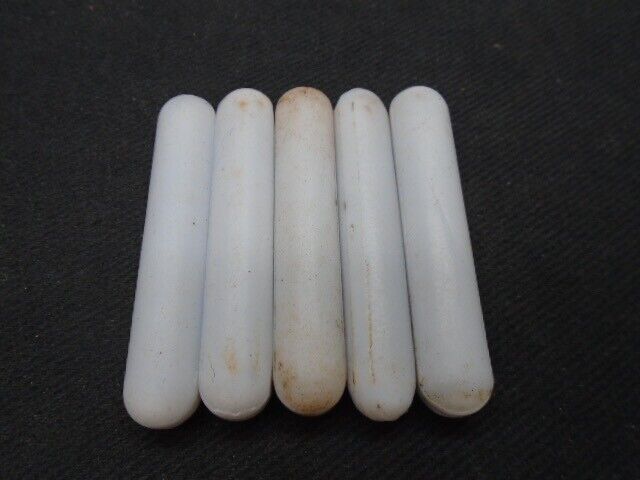What Happens When Teflon Coatings Break Down?
Teflon, also known as polytetrafluoroethylene (PTFE), is one of the most well-known and widely used non-stick coatings found in a variety of consumer products. From frying pans to cookware, to pipes and even clothing, Teflon has made everyday life easier, more efficient, and less sticky. However, like any material, Teflon is not immune to wear and tear over time. When Teflon coatings begin to break down, the consequences can range from minor inconveniences to significant health and environmental risks. In this blog post, we will explore the causes and effects of Teflon degradation, how it can impact both our health and the environment, and what we can do to minimize the risks.
Understanding Teflon Coatings
Teflon is a synthetic polymer made up of carbon and fluorine atoms. Its most well-known property is its incredibly low friction, which makes it ideal for use as a non-stick coating for cookware. The non-stick surface allows for easy food release, which makes cooking and cleaning much more convenient. In addition to cookware, Teflon is used in a wide range of applications, including waterproof clothing, industrial machinery, wiring insulation, and even medical devices, due to its heat resistance, chemical stability, and non-reactivity.
However, while Teflon’s properties are advantageous, they are not permanent. Over time, the very factors that make Teflon so useful, such as heat resistance and smoothness, can lead to its eventual breakdown.
The Causes of Teflon Degradation
Teflon is a durable material, but like all substances, it is subject to wear and damage. Several factors can contribute to the degradation of Teflon coatings, including:
1. Heat Exposure
Teflon is designed to withstand high temperatures, but it has a limit. When cookware coated with Teflon is exposed to temperatures above 500°F (260°C), the polymer begins to break down. This can occur if the cookware is overheated, left on a hot stove for too long, or exposed to direct flames. When the coating degrades under excessive heat, it can start to release toxic fumes, which may pose health risks.
2. Physical Scratching
Scratching the surface of Teflon cookware with metal utensils, abrasive cleaning pads, or sharp objects can cause the coating to deteriorate. Once scratched, the surface of the Teflon becomes vulnerable to further degradation, as it may allow food particles to stick and potentially cause further damage. The degradation of the coating can also lead to the release of small flakes of Teflon into the food.
3. Age and Use
As with any material, Teflon coatings naturally degrade over time with repeated use. Even if you don’t overheat your cookware or use metal utensils, the constant exposure to heat, food acids, and cleaning agents will slowly cause the non-stick surface to break down. This process can result in reduced non-stick performance, allowing food to stick more easily and making cleaning more difficult.
4. Chemical Exposure
Teflon coatings may also break down if exposed to certain chemicals. Harsh cleaning agents, acidic substances, or solvents can weaken the bond between the Teflon molecules, causing the coating to peel or wear away more rapidly. In industrial applications, Teflon is exposed to a variety of harsh chemicals, and prolonged exposure can eventually cause the coating to lose its protective qualities.
Health Risks of Teflon Breakdown
One of the major concerns when Teflon coatings break down is the potential health risks associated with the materials that are released. When Teflon begins to decompose, especially under high heat, it can release a variety of toxic substances, including perfluorooctanoic acid (PFOA) and other perfluorinated chemicals (PFCs).
1. Toxic Fumes and PFOA Exposure
When Teflon is heated above its recommended temperature (around 500°F or 260°C), it can release toxic fumes that can cause flu-like symptoms in humans and animals. This condition is known as “Teflon flu” or “polymer fume fever.” The symptoms include chills, fever, headaches, and body aches. These fumes are particularly dangerous for birds, which can suffer from acute respiratory distress and even die from exposure to the fumes.
Furthermore, Teflon coatings may have been produced using perfluorooctanoic acid (PFOA) or similar chemicals, which are persistent environmental pollutants. PFOA has been linked to a number of health problems, including liver damage, thyroid disease, developmental issues, and an increased risk of cancer. While PFOA has been largely phased out of production in recent years, older Teflon products may still contain traces of this harmful substance.
2. Ingestion of Teflon Particles
When the Teflon coating on cookware starts to degrade, small flakes or particles of Teflon may detach and end up in food. While Teflon is generally considered non-toxic if ingested in small amounts, consuming large quantities of Teflon particles over time could potentially cause issues, especially if the coating contains harmful chemicals like PFOA.
3. Risk to Pets
The release of toxic fumes from overheated Teflon can be especially dangerous to pets, particularly birds. Birds have sensitive respiratory systems, and exposure to the fumes from overheated Teflon can lead to severe respiratory distress or even death. It is important to ensure that pet birds are not exposed to non-stick cookware or overheated pans.

Environmental Impact of Teflon Degradation
The environmental impact of Teflon breakdown is also a growing concern. Teflon, particularly in the form of small particles or chemicals such as PFOA, is persistent in the environment. PFOA, in particular, does not break down easily and can contaminate water supplies, soil, and wildlife. As these chemicals accumulate in the environment, they pose long-term risks to ecosystems and human populations.
In recent years, there has been increasing scrutiny over the environmental impact of Teflon, particularly in relation to its production and disposal. Many efforts have been made to phase out PFOA and other harmful chemicals from Teflon manufacturing, but concerns remain about the potential legacy of these substances.
How to Minimize the Risks of Teflon Breakdown
While the risks associated with Teflon degradation cannot be entirely eliminated, there are several steps you can take to minimize these risks:
1. Avoid Overheating Teflon Cookware
To prevent Teflon from breaking down, avoid overheating your non-stick cookware. Do not cook on high heat for extended periods, and never leave a pan on the stove without supervision. Use medium or low heat for cooking to maintain the integrity of the Teflon coating.
2. Use Non-Metal Utensils
To avoid scratching the Teflon surface, use wooden, silicone, or plastic utensils rather than metal ones. This will help preserve the non-stick coating and prevent premature wear and tear.
3. Replace Damaged Cookware
If your Teflon cookware becomes scratched, chipped, or damaged, it’s best to replace it. Continuing to use damaged cookware could expose you to potential health risks, and it will also make cooking and cleaning more difficult.
4. Proper Disposal
If you need to dispose of Teflon-coated products, follow local guidelines for disposing of hazardous materials. Do not throw non-stick cookware in the trash without checking for recycling programs or specialized disposal methods.
Conclusion
Teflon coatings are incredibly useful, but like any material, they are subject to breakdown over time. When Teflon breaks down, it can release harmful chemicals and particles that pose risks to both human health and the environment. To ensure the longevity and safety of your Teflon products, it’s essential to work with reputable providers like a Teflon supplier Singapore. By understanding the causes of degradation and following best practices for care and maintenance, you can reduce the likelihood of Teflon breakdown and enjoy the benefits of non-stick surfaces while minimizing potential risks. Stay informed, use your Teflon products wisely, and dispose of them responsibly to protect your health and the planet.





